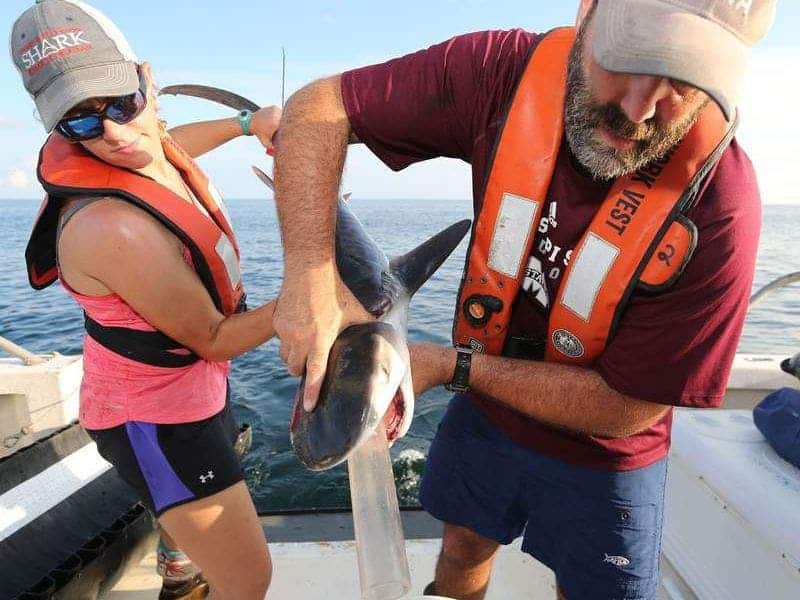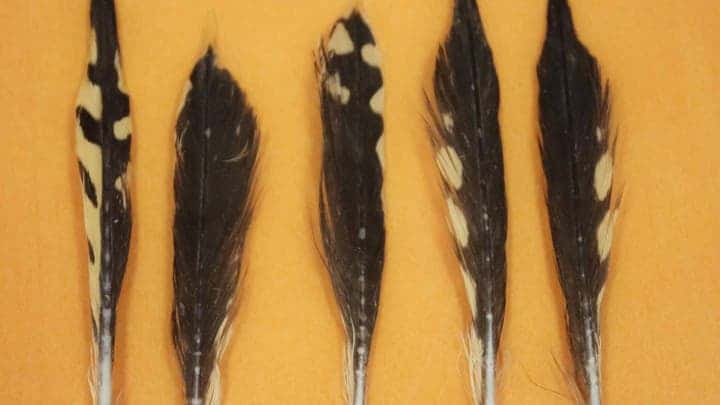A new study found that tiger sharks have the weird habit of eating land birds, including the likes of house wrens, barn swallows, and even doves.

Baby shark
When a baby tiger shark threw up in the boat of marine ecologist Marcus Drymon, it wasn’t exactly surprising. Drymon routinely catches, tags, and then releases sharks around the fisheries of Mississippi, and while the experience poses no long-term risk to the sharks, they can be quite stressed momentarily. But while the shark throwing up was all routine, what he vomited was much more surprising.
Tiger sharks are sometimes called the garbage bins of the seas — they’ll eat everything. Seabirds like gulls and terns are often a part of the sharks’ diet, except these weren’t seabird feathers, they distinctly looked like land bird feathers. So Drymon took them to the lab, analyzed them, and confirmed these suspicions: the shark had eaten songbirds — specifically, a small, brown forest bird related to the mockingbird.
“I had expected a laughing gull or a brown pelican,” Drymon says. “The brown thrasher was the last bird I would have expected.”
His colleagues were equally surprised.
“Tiger sharks will see an easy meal and snatch it up, but I was surprised to learn that the sharks were eating songbirds — I assumed that they’d be seabirds,” says Kevin Feldheim, a researcher at Chicago’s Field Museum and a co-author of the study who led the DNA analysis that told the researchers what kinds of birds the sharks were eating. “It was one of the coolest projects I’ve been associated with using DNA to tell a story.”
In order to see just how common this is, the team carried out a survey of 105 tiger sharks’ stomach contents, finding that 41 of them (39%) were feasting on land birds — especially baby sharks. It wasn’t just one species of bird either — researchers found evidence of 11 bird species being devoured by sharks.
“None of them were seagulls, pelicans, cormorants, or any kind of marine bird,” Drymon says. “They were all terrestrial birds” — the kinds that might live in your backyard.
Which, of course, leaves one big question: how does an underwater predator eat birds that live in forests?

Migration is hard
Most seabirds are used to flying for hours or even days on end, but the same can’t be said for land birds. Living in the forest, they don’t exactly need to adapt to long flights, but many such birds have migrations nonetheless. In the area where the study takes place, the migration takes place over the Gulf of Mexico. Faced with a storm, strong winds, or even sheer exhaustion, birds might land on the water to rest a bit — and once they do so, they’re done for.
“The tiger sharks scavenge on songbirds that have trouble flying over the ocean. During migration, they’re already worn out, and then they get tired or fall into the ocean during a storm,” adds Feldheim.
It’s the easiest prey for a shark, particularly one in training. The clever predators that they are, sharks learn how to take advantage of the birds’ weaknesses — it’s not uncommon for them to pick on weak or young birds.
“There’s a site off Hawaii where baby albatrosses learn to fly, and adult tiger sharks pick them off,” explains Feldheim.
To further test their hypothesis, they compared the timing of their findings with that of the migration, using eBird, a bird-watching database run by Cornell University. The results fit perfectly, adding even more proof that the sharks were preying on songbirds during their migration.
This unexpected relationship links two completely unrelated ecosystems, the marine and the forest, which leads to another question: if stocks of migratory land birds were to collapse, would it also affect the sharks? It’s a very plausible possibility, and it shows just how interconnected ecosystems are, and how life in one place can affect some things that lie much farther away.
Journal Reference: Drymon et al. Tiger sharks eat songbirds: scavenging a windfall of nutrients from the sky. Ecology, 2019; e02728 DOI: 10.1002/ecy.2728


